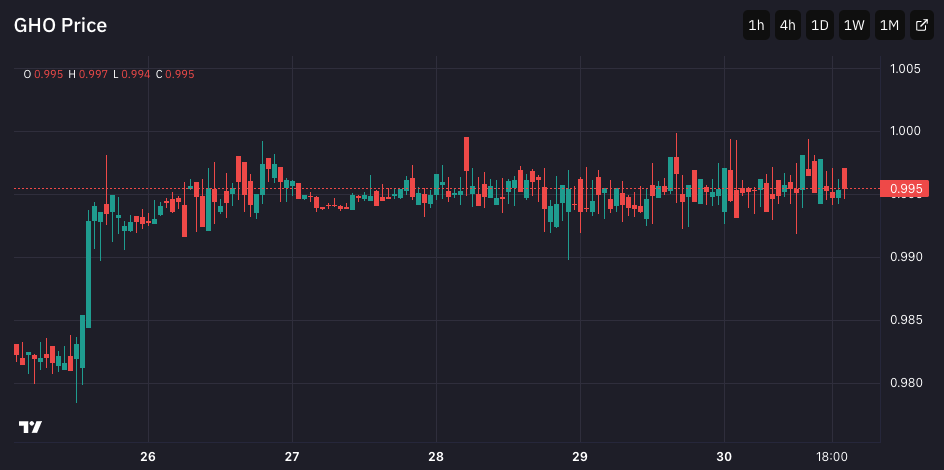title: [ARFC] GHO Stewards
author: @karpatkey_TokenLogic
created: 2024-01-30
Summary
This publication proposes to creating the GHO Stewards and granting the GHO Stewards permission to adjust the following parameters:
- GHO Borrow Cap
- GHO Borrow Rate
- GSM Exposure Cap
- GSM Bucket Capacity
- GSM Price Strategy
- GSM Fee Strategy
- GSM Price Range (Freeze, Unfreeze)
GHO Stewards consists of members from Growth (ACI), Risk (ChaosLabs and Gauntlet) and Finance (TokenLogic + karpatkey) Service Providers and utilise a 3 of 4 multi-sig.
Motivation
Introduction
With the launch of stkGHO, the GHO price has improved significantly.

Source: TokenLogic
In preparation for the possibility that GHO trades above peg, this proposal enables a select group of 4 Service Providers to adjust several key parameters affecting GHO’s ability to grow in a safe manner that maintains the peg.
With representation from all the major facets supporting GHO, this group ensures Risk, Growth and Liquidity provisions are all considered when amending the GHO Borrow Cap.
Implementation of this proposal enables further streamlining of governance by enabling several GHO related parameters to be adjusted in synchronised harmony with prevailing market conditions.
Borrow Cap
With the current Borrow Cap reached and GHO trading closer to peg, there is a risk of limited capacity for the market to react to an over-peg scenario. Users would be unable to mint GHO and arbitrage the price back to $1 (mint 1 GHO and swap >$1).
With many liquidity pools to be created and rewards distributed across, it is important the DAO can swiftly increase the GHO Borrow Cap to mitigate GHO trading above $1. The GHO Stewards will be able to increase the GHO Borrow Cap swiftly to mitigate GHO trading above peg. The GHO Stewards can increase the GHO Borrow Cap up to a threshold of 50M units.
Borrow Rate
The GHO Stewards will replace ACI’s ability granted via AIP-381 and will implement the Borrow Cap adjustment via an admin role without needing to push an AIP to vote.
The Borrow Rate is to be adjusted gradually to enable the ecosystem to expand in a safe way. The criteria is outline below:
If the trailing 30 day average price of GHO stays outside a $0.995$1.005 price range, the GHO Stewards are able adjust the Borrow Rate no more than 100bps per 7 day period, up to a maximum 9.5% APR.
GSM Parameters
Details on each of the GSM features can be found here on the governance forum and here on Github. In short, the GHO Steward can customise the GSM parameters to suit prevailing market conditions.
Specification
GHO Stewards will consist of the following Service Providers:
- @karpatkey_TokenLogic - @Sisyphos and @MatthewGraham
- @ACI - @MarcZeller
- @ChaosLabs - @OriN
- @Gauntlet - @Pauljlei
The GHO Stewards will determine if and how much to adjust the following:
- GHO Borrow Cap (up to a maximum of 50M units)
- GHO Borrow Rate
- GSM Exposure Cap
- GSM Bucket Capacity
- GSM Price Strategy
- GSM Fee Strategy
- GSM Price Range (Freeze, Unfreeze)
Decisions are made when 3 of 4 above are in agreement whereby @karpatkey_TokenLogic will be using a nested multi-sig (2 of 2).
@karpatkey_TokenLogic will gladly share these decisions and their rationale in this thread.
Disclaimer
TokenLogic and karpatkey receive no payment for this proposal. TokenLogic and karpatkey are both delegates within the Aave community.
Copyright
Copyright and related rights waived via CC0.